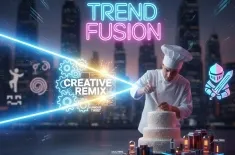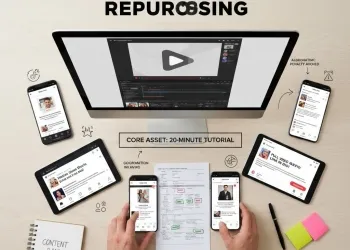Explore interactive challenges, spin the wheel mechanics, and community rewards to create compelling buyer incentives.
The digital marketplace is saturated, and the modern consumer suffers from choice paralysis and banner blindness. Simply listing products with their features is no longer enough to capture attention or, more importantly, loyalty. The future of e-commerce lies not just in product quality but in the experience of buying. This is where gamification—the application of game-design elements and principles in non-game contexts—steps in.
Gamifying the purchase experience is the strategic act of injecting fun, competition, and reward-based mechanics into the shopping journey. It transforms a mundane transaction into an exciting, memorable **interactive challenge**. By appealing to the fundamental human desire for achievement, status, and recognition, businesses can significantly boost engagement, encourage repeat visits, increase conversion rates, and cultivate a deeply loyal customer base.
The Core Mechanics of E-Commerce Gamification
Successful gamification is built on well-understood psychological triggers. It leverages concepts like instant gratification, scarcity, and a sense of progress. These mechanics can be subtle, such as a progress bar at checkout, or overt, like a full-blown competitive leaderboard.
The Power of Chance: Spin the Wheel
One of the most effective and immediately engaging gamification tools is the **spin the wheel** mechanic. Usually presented as a pop-up when a user is about to leave a page (an exit-intent trigger) or during a specific promotional period, the digital wheel offers users a chance to win a prize, discount, or free gift.
The power of the spin the wheel lies in the illusion of control and the fear of missing out (FOMO). The user is actively participating, not passively receiving an offer. Even if the majority of spins result in a modest $5 off, the potential to win a higher-value prize is enough to maintain excitement. Critically, to play, the user almost always has to provide an email address, making it a powerful lead-generation tool that simultaneously offers a compelling **buyer incentive** to complete a purchase immediately.
Structured Engagement: Interactive Challenges
Moving beyond pure chance, **interactive challenge** campaigns require users to perform a series of actions or meet specific goals. These can include:
- "Complete Your Profile" Challenge: Users earn points or a small discount for filling out their entire profile, giving the company valuable data.
- "Daily Login Streak": Rewarding users with small points or virtual currency for visiting the site consecutively, which drives traffic.
- "Scavenger Hunt": Hiding a code or token across different product pages, forcing users to explore the depth of the catalog.
These challenges elevate the user's status within the brand ecosystem, turning them from a mere shopper into an active player. The accumulation of points, badges, or tiers—known as a loyalty ladder—provides a clear, desirable goal that encourages continued interaction with the brand.
Leveraging Social Proof and Community Rewards
Gamification thrives on social interaction and public recognition. When games are played in a community setting, the rewards extend beyond the individual discount and tap into the powerful human need for social status and belonging.
The Viral Loop of the Comment Contest
Social media platforms are the perfect proving ground for quick, high-engagement contests. One highly effective tactic is setting up a brief, simple, and **interactive challenge** within a video format.
Explaining the Video Contest Strategy
Using a video to set up a quick, interactive contest (e.g., "Guess the price in the comments to win a voucher!") is a masterstroke in audience engagement. The strategy works on several levels:
- Attention Capture: Videos naturally stop the scroll on social feeds better than static images.
- Low Barrier to Entry: The user only needs to watch a short clip and type a quick guess. This minimal effort maximizes participation.
- Algorithmic Boost: Social media algorithms (like those on Instagram, TikTok, and YouTube) heavily favor posts with high engagement, especially those with numerous original comments. The **comment contest** rapidly increases the post’s visibility, organically pushing it to a wider audience, thereby increasing brand reach and potential sales funnel entry.
- The Reward: The promised voucher acts as an immediate **buyer incentive**, directing traffic straight to the e-commerce store with the intent to purchase.
This type of **comment contest** creates an immediate viral loop. A user sees their friends commenting, feels the pull to join in, and thus increases the overall audience attention on the brand's product.
Fostering Loyalty with Community Rewards
Beyond individual wins, gamification can unify a customer base. **Community reward** programs pool the actions of many for a collective benefit. For instance, if the brand is launching a new product, they might set a goal: "If 5,000 customers review our current line this week, everyone gets a store-wide 20% discount."
This strategy shifts the focus from individual competition to collective achievement. It fosters a sense of shared purpose and makes customers invested in encouraging other customers to participate. The reward, often an **exclusive deal** on a new or popular item, becomes a badge of honor for the collective effort, cementing customer loyalty and generating significant hype.
Strategic Use of Buyer Incentives and Exclusivity
The ultimate goal of gamification is to drive conversion and repeat purchases. This is achieved by carefully structuring the **buyer incentive**—the tangible reward that motivates the user's action.
Tiers, Points, and Exclusive Deals
Gamified loyalty programs use a tiered system (Bronze, Silver, Gold) to create status and drive spending.
- Points as Currency: Every dollar spent translates into points, which can be redeemed. This turns money into a game resource.
- Status Benefits: As a customer moves up the tiers, the rewards become more enticing. A Gold-tier member might receive early access to sales, faster shipping, or a personalized, **exclusive deal** just for their status group. The perceived value of the status is often greater than the monetary value of the reward.
- Driving Action: Points aren't just earned through purchases; they can be awarded for writing product reviews, referring friends, or participating in the **interactive challenge** described above.
This system ensures that the customer is constantly motivated to interact with the brand, as inactivity results in a loss of progress or missing out on a status-based reward.
Gamifying the Checkout: Instant Gratification
The checkout process, often the point of highest friction and cart abandonment, is a crucial area for gamification.
- Progress Bars: A simple progress bar (e.g., "Step 1 of 4: Shipping Info") makes the long process seem manageable and provides a psychological push to complete the task.
- Spend-to-Win: A subtle message like, "Spend just $15 more and get free shipping!" or "Spend $50 more and unlock a mystery gift!" offers an immediate, tangible **buyer incentive** to increase the Average Order Value (AOV). This turns the purchase into a mini-game of hitting a spending target to win a reward.
Future-Proofing: Personalized and AI-Driven Gamification
The next frontier of gamification is hyper-personalization, driven by Artificial Intelligence (AI) and Machine Learning (ML). Instead of a generic **spin the wheel** pop-up, AI can analyze a customer's purchase history and browsing behavior to tailor the game and the reward.
For a customer who always buys electronics, the **interactive challenge** might be a quiz on new tech specs, with the **exclusive deal** being a flash sale on a product they've been eyeing. For a customer who frequently shares products, the reward might be a greater **community reward** status or a higher tier in the referral program.
The future of **buyer incentive** programs will be completely unique to the individual, creating a one-to-one relationship with the brand that is both fun and deeply rewarding. By continually offering novel **interactive challenge** elements and clear value through their rewards, businesses can ensure their purchase experience is not just a transaction, but a long-term relationship built on engagement and play. The gamified experience, centered around the customer, is the ultimate engine for sustainable e-commerce growth.
Conclusion: Playing the Long Game
Gamifying the purchase experience is not a gimmick; it is a foundational strategic shift in how businesses interact with their customers. By deploying smart mechanics like the engaging **spin the wheel**, viral **comment contest**, and motivating **interactive challenge** systems, brands create a virtuous cycle of engagement and reward. These systems are powered by desirable **buyer incentive** structures, reinforced by **exclusive deal** offers, and often amplified by collective **community reward** programs. The result is a memorable, sticky, and profitable brand experience that turns casual browsers into lifelong, loyal fans who not only shop but actively play with the brand.



































